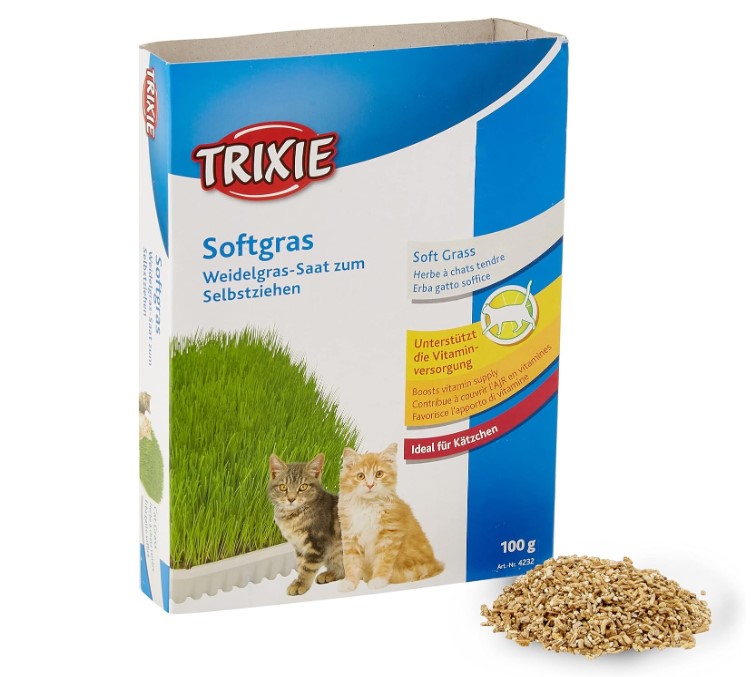How to grow cat grass – and keep your feline friends happy
Cultivating cat grass enriches your pet's health by aiding digestion and supplying vital nutrients
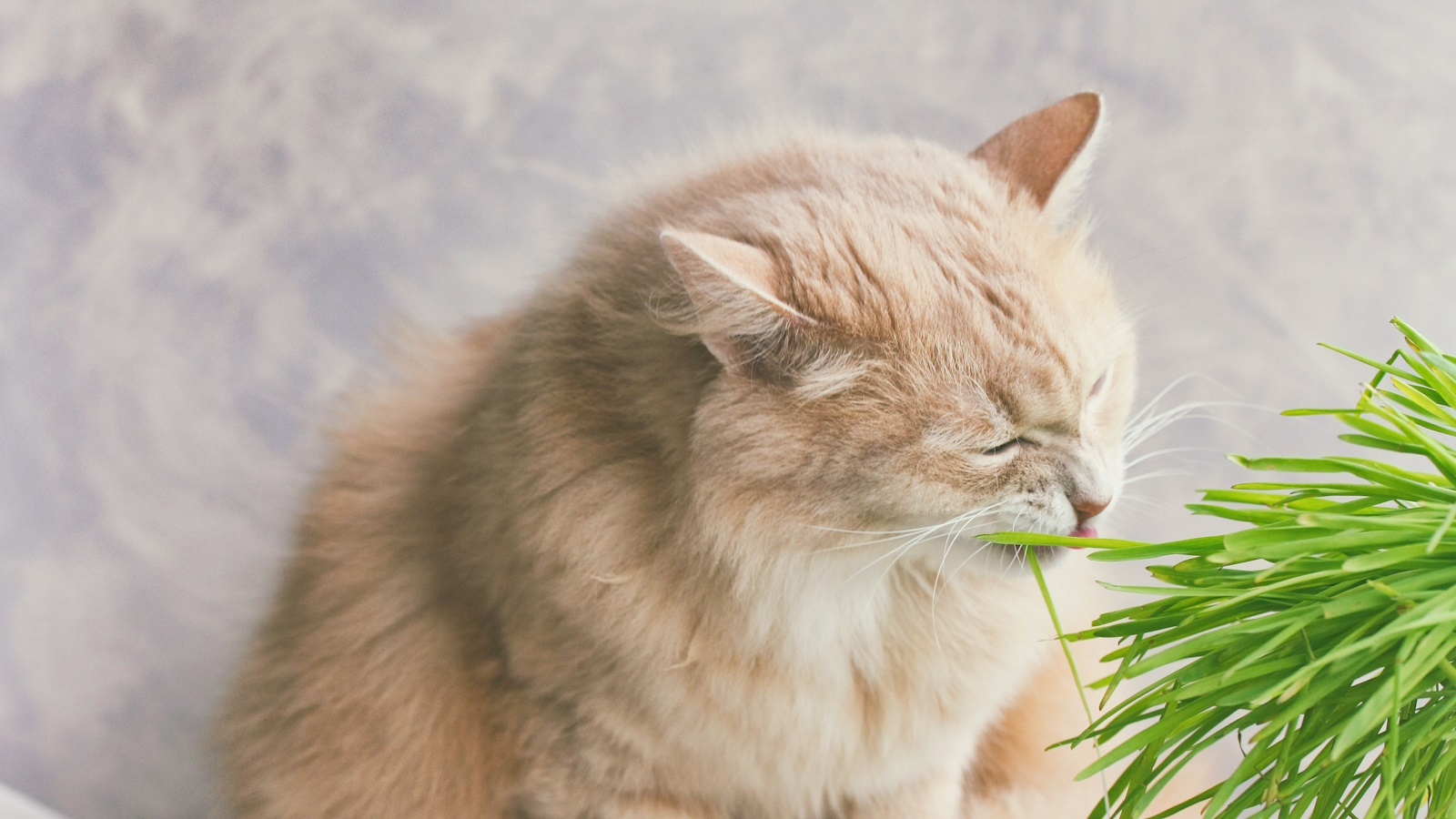

Cat grass is a great enrichment activity for cats, especially if your cat tends to enjoy chewing on plants. By growing cat grass, you can give them an acceptable alternative to nibbling on an expensive houseplant, which could be potentially harmful to your pet.
Growing cat grass at home is a simple and enjoyable way to enrich your cat's environment by providing them with a safe and nutritious option for their natural grazing behavior.
Cat grass is usually a form of wheatgrass, barley, oat, and rye, or a mixture of these grasses. They are all safe and healthy for cats. Starting with high-quality, organic seeds is crucial to ensure the grass is free from any pesticides. Here, we look at how best to grow it and give your cat a healthy treat.
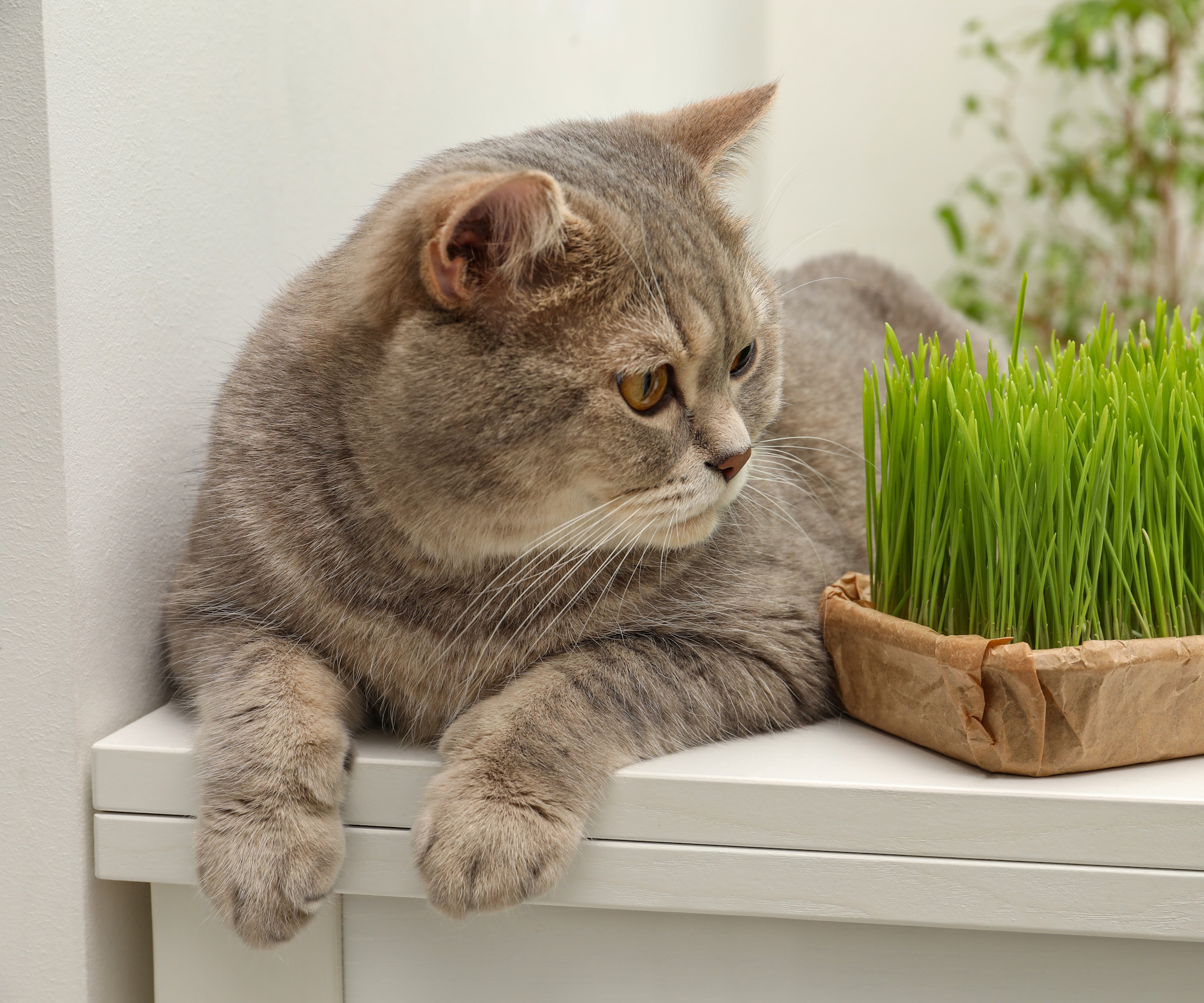
How to grow cat grass
Discover our quick and easy guide to growing cat grass and preparing it for your feline friend.
Preparing for sowing cat grass

Joey Lusvardi, a certified cat behavior consultant, suggests planting cat grass 'in a heavier container can prevent your cat from knocking over the pot and creating a mess when they munch on the grass'.
One trick to keep a constant supply of cat grass is to start a few separate nursery pots of grass a few days or a week apart from each other and rotate them into your heavier plant pot as your cat goes through the grass. The nursery pots will make it easy for you to swap fresh grass out as needed, while the heavy plant pot will prevent your cat from knocking it over.
Consider a pot with drainage holes from Amazon so you don’t risk accidentally over-watering your grass.
Design expertise in your inbox – from inspiring decorating ideas and beautiful celebrity homes to practical gardening advice and shopping round-ups.

Joey Lusvardi runs Class Act Cats, a feline behavior consultation service based in Minneapolis, Minnesota.
Planting cat grass seeds
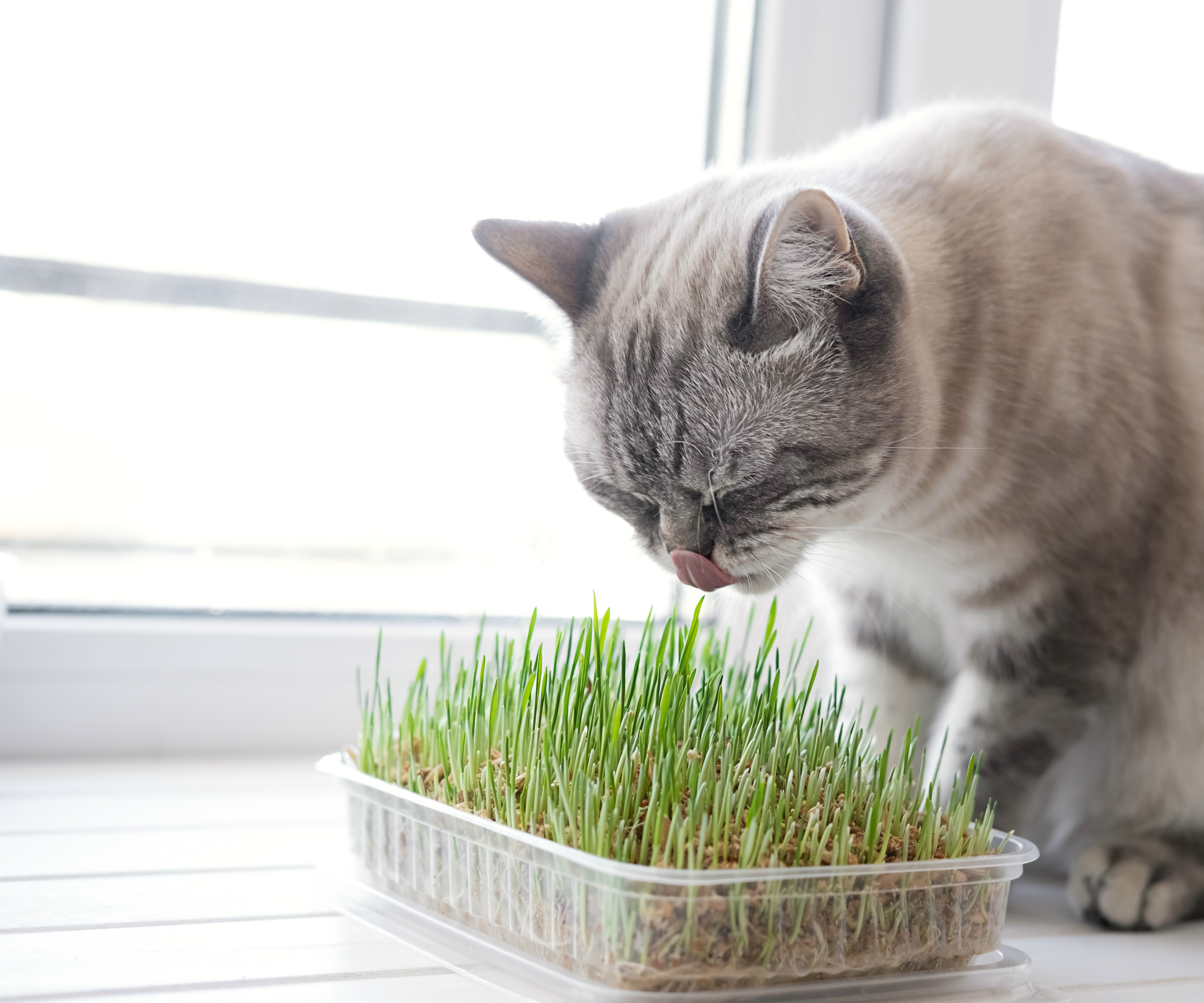
Plant your cat grass in a location that gets bright light away from any cold, draft windows or, if you don’t have great lighting, you can use a grow light.
Cover the soil in enough organic grass seed for cats from Amazon so that the top of the soil is completely covered, but don’t make it too thick or you’ll end up with rotting seeds that don’t germinate.
‘Give the seeds a good watering and drain any excess water so the pot doesn’t stand in water. Seeds will usually germinate within a few days to a week,’ says gardening expert Zahid Adnan.
‘During this time, keep the soil and seeds moist but not soaking wet. It can be tempting to overwater them so be careful. Depending on the humidity in your home and the soil you use, watering frequency can vary.’
Using spray bottles are a great tool for watering cat grass seeds. You can get the top layer of the soil and seeds just wet enough that the seeds germinate, but not enough that mold grows. Over-watering is one of the biggest reasons people are not successful when growing cat grass.

Zahid is a renowned figure in the gardening industry, with extensive experience and skills in horticulture. He is the founder and editor of theplantbible.com.
Caring for cat grass as it grows
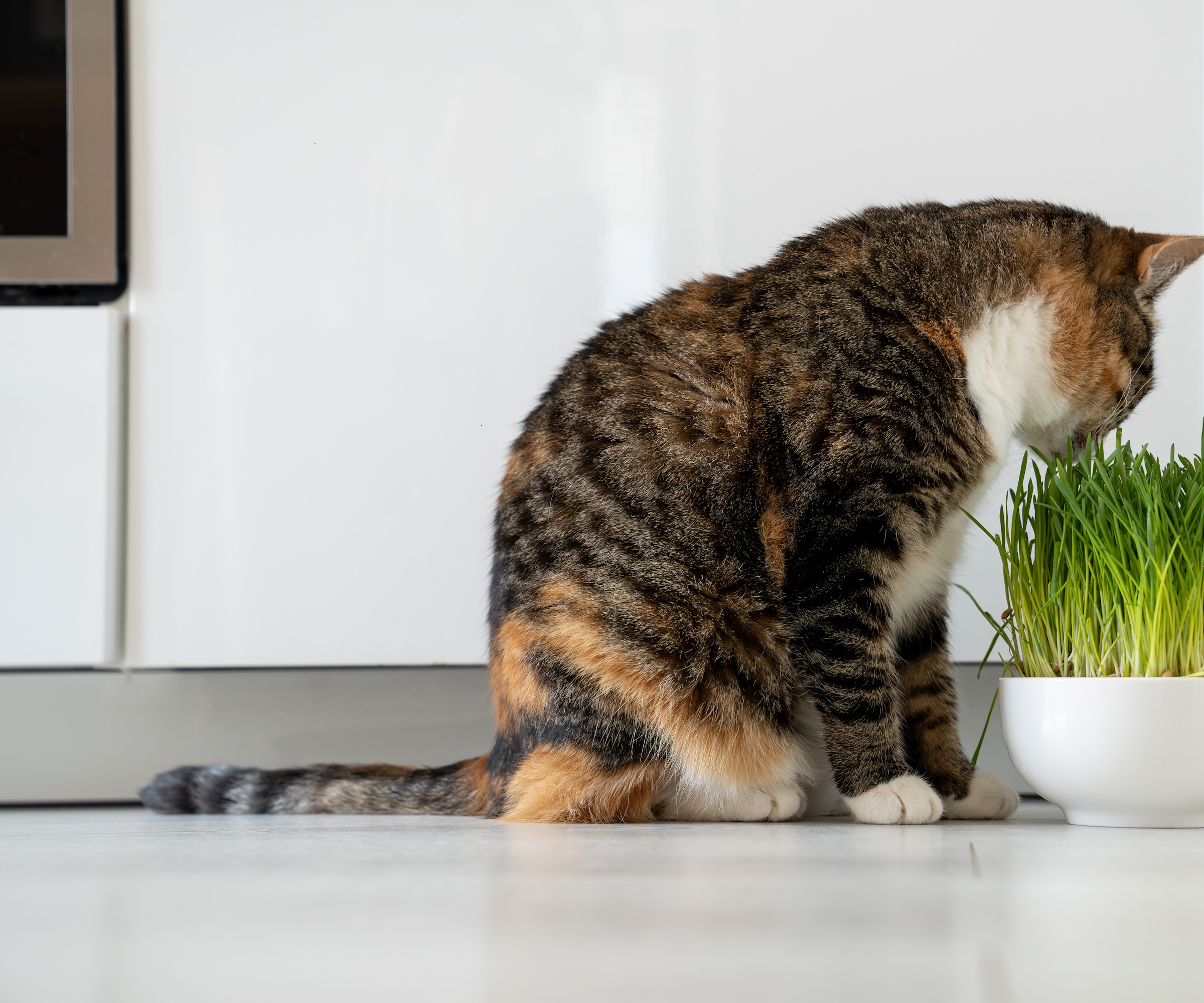
Once the seeds germinate, water them lightly every other day. If you keep it well maintained, you can usually keep cat grass alive and healthy for a few weeks to a month.
When the grass starts to fade, grab some additional seeds and plant some more. Try to keep the early growing grass away from your cat until it’s a few inches high, so your cat doesn’t prematurely eat the grass.
Once it’s ready for munching, you can either keep it in the pot and give it to your cat, or cut off some of it and put it in a dish. Most cats seem to prefer the grass intact in the pot, as they would chew it in the backyard.
Shop cat grass growing kit
FAQs
Is cat grass the same as catnip?
While both plants are safe for cats, they are entirely different. Catnip is part of the mint family, while cat grass is usually a mixture of rye, barley or wheat grasses. Both can be grown indoors. Catnip has behavioural effects on cats, whereas cat grass is simply a nutritious snack for them to nibble on.
How long will cat grass live?
Since cat grass is actually wheatgrass sprouts, it helps to think of it as produce and care for it in a similar way. The average lifespan of wheatgrass is about 2 to 3 weeks, depending on a variety of factors such as the temperature and humidity in your growing environment.
Growing cat grass not only provides your feline with a safe and healthy snack, but also adds a touch of greenery to your home. You might also be interested to know the best cat-safe indoor plants to add to your houseplant collection.

Seraphina is a contributing editor at Homes & Gardens, writing Solved features on organizing and storage. She loves to decorate and also grow her own produce from her home in London. Her previous experience includes working at Women's Health and Fabulous Magazine.
